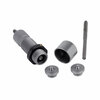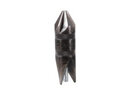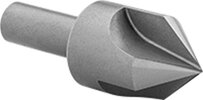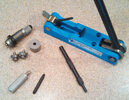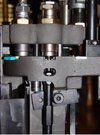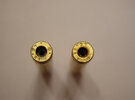This has irritated me for a while.
When I remove the crimps, every piece I have to rotate around and find the sweet spot for the primer to go in. Once I find it, the primer goes in smoothly. Is this normal? It feels like operator error to me, but no other issues.
BTW, I have the hornady swage tool and the rcbs reamer that stops before cutting too deep. Both of them give the same results as well.
Thanks
When I remove the crimps, every piece I have to rotate around and find the sweet spot for the primer to go in. Once I find it, the primer goes in smoothly. Is this normal? It feels like operator error to me, but no other issues.
BTW, I have the hornady swage tool and the rcbs reamer that stops before cutting too deep. Both of them give the same results as well.
Thanks


